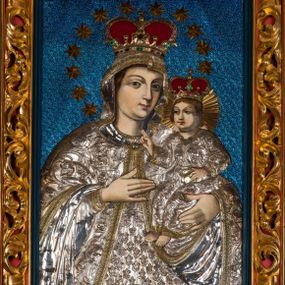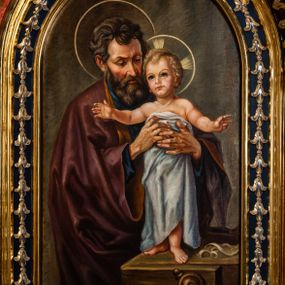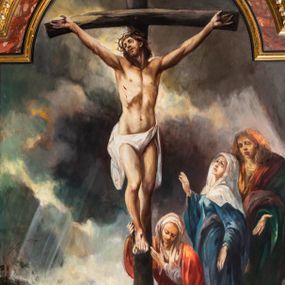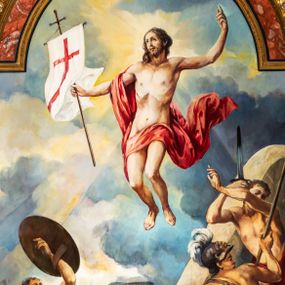
Ruszcza
Elaboration author
Emilia Karpacz
Monuments
History abstract
Ruszcza was probably the home of the knightly Świebodzice-Gryfici family. Most probably, on their initiative, during the reign of Bolesław the Wrymouth, a brick Romanesque church was erected in the settlement and secular canons arrived in Ruszcza. The village was first mentioned in a document from 1222. In the diploma of Bolesław the Chaste from 1250, Klemens Gryfita, the owner of Ruszcza and a trusted supporter of the prince, was mentioned. Most probably at the beginning of the 13th century, a parish was established in Ruszcza in place of the secular canonical centre, and in 1373 Elisabeth of Poland (Elżbieta Łokietkówna) allowed the transfer of the village from the Polish law to the Środa law. At the turn of the 14th and 15th centuries, the heir of Ruszcza, Branice and the surrounding estates was a Cracovian pantler, Wierzbięta from Branice, the founder of a newly erected Gothic parish temple and a nearby provostry. The Gryfici family from Ruszcza and Branice, who in time took the name Branicki, were active and influential politicians during the reign of the first rulers of the Jagiellonian dynasty, but later began to lose their importance. In the middle of the 17th century, thanks to contributions of the chamberlain of Cracow, Jan Klemens, they regained their influence. The marriage of his son, Jan Klemens II with Aleksandra Katarzyna Czarniecka and taking over the Tykocin estate as her dowry, bound the family to Podlasie. With time, the centre of Branicki's wealth moved there, and Ruszcza and Branice, their former family homes, remained abandoned and neglected. In the times of Jan Klemens III Branicki (from 1752, the Grand Hetman of the Crown), these estates were under the supervision of governors. In 1850 Ruszcza and Branice were taken over as a pledge by Józef Stadnicki, who was in conflict with his ill-treated subjects, and after Branicki bought out the pledge 11 years later, he did not want to return the occupied estates. After the hetman's death, the widow, Izabela Branicka, leased Ruszcza to Stanisław Badeni. In 1801 the Branicki heirs ultimately sold the whole estate to the Badenich family. Ruszcza was taken over by Stanisław's brother, Marcin. In 1832, thanks to the daughter of Marcin, Zofia Popiel of Badeni, the village became the property of her son, Paweł Popiel. In 1840 the local manor house and manor farm burnt down. After the January Uprising, the Popiel family erected a new neo-Renaissance residence, which became an important intellectual and artistic centre of Cracow's elites. The last owner of the village before World War II was the granddaughter of the Popiel family, Róża Kieniewicz. After the war, the state took over the Ruszcza residence and the former manor lands. In the manor house, there was a farm cooperative, a shop, a post office and flats. In 1951 Ruszcza was incorporated into the 18th district of Cracow, Nowa Huta. In 2006 the heirs of the Popiel family regained their legacy in Ruszcza, including the devastated manor house.
How to cite?
Emilia Karpacz, "Ruszcza", [in:] "The Sacred Lesser Poland Heritage", 2026, source: https://sdm.upjp2.edu.pl/en/places/ruszcza-1




